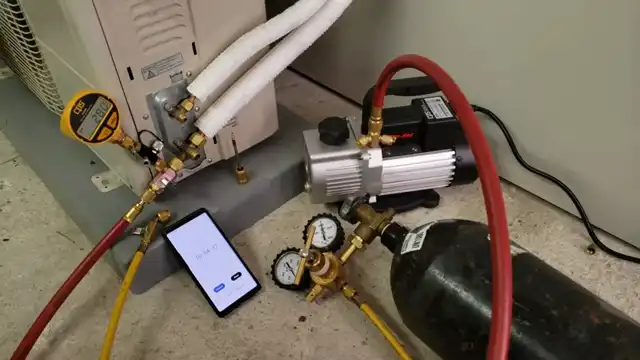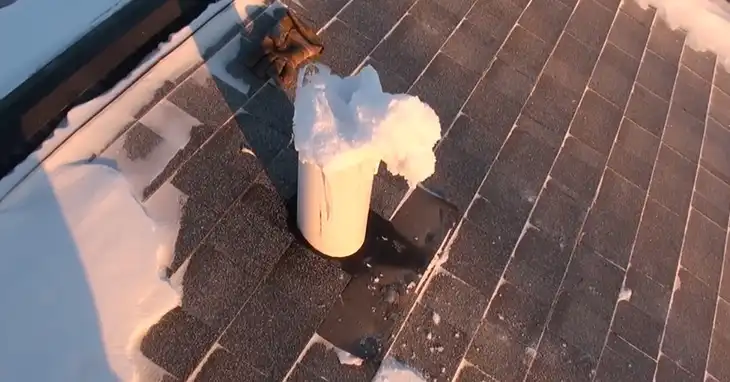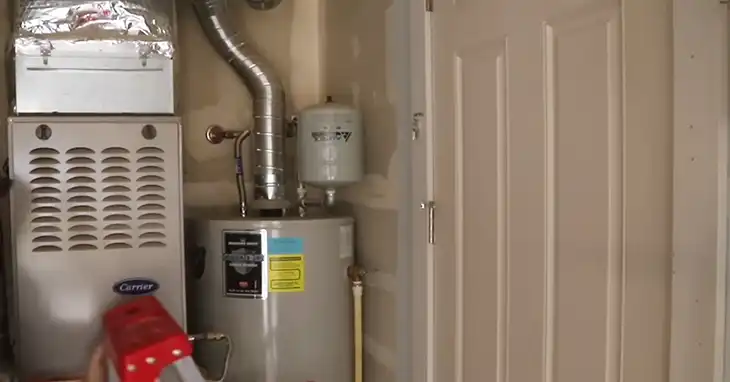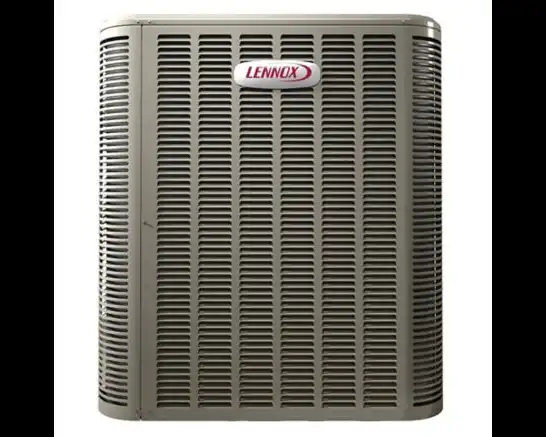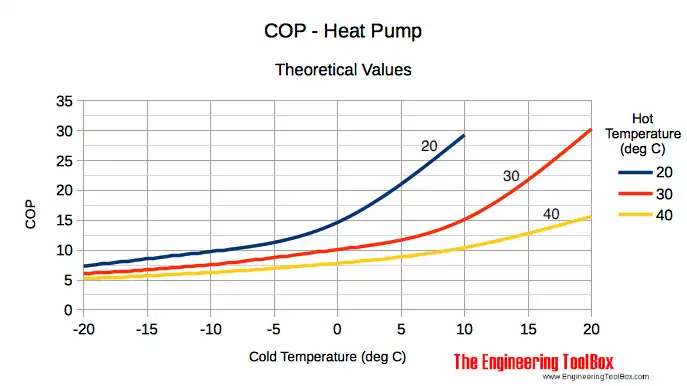Rooftop Unit Vs Split System | A Comparative Study
Choosing the right HVAC system for your commercial or residential space can be a difficult task, especially when it comes to weighing the pros and cons of rooftop units versus split systems.
In a nutshell, a rooftop unit is a self-contained HVAC system typically installed on the roof of a building, while a split system consists of an outdoor condensing unit and an indoor air handling unit connected by refrigerant piping. Both systems have their advantages and disadvantages, and the choice between the two largely depends on factors such as the size of the building, budget, energy efficiency requirements, and climate conditions.
In this guide, we’ll learn about rooftop units and split systems, exploring their key features, installation processes, maintenance requirements, and energy efficiency ratings. Let’s get started.
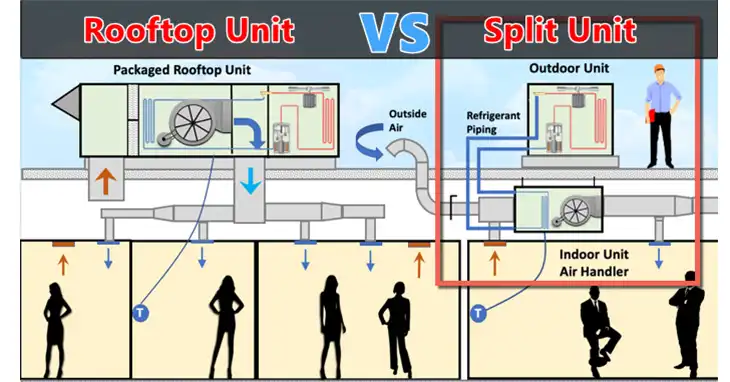
Rooftop Units
Rooftop units, also known as packaged units or RTUs, are all-in-one HVAC systems that combine heating, cooling, and ventilation components into a single unit. These units are designed to be installed on the roof of a building, making them a popular choice for commercial and industrial applications where space is at a premium.
Key Features of Rooftop Units
- Compact Design: Rooftop units are self-contained and do not require separate indoor and outdoor units, saving valuable indoor space.
- Easy Installation: These units are pre-assembled and can be installed relatively quickly, minimizing downtime and disruption.
- Flexible Configurations: Rooftop units are available in various configurations, including gas/electric, heat pump, and air-cooled or water-cooled models, allowing for customization based on specific requirements.
- Zoning Capabilities: Some rooftop units offer zoning capabilities, allowing for independent temperature control in different areas of the building.
Advantages and Disadvantages of Rooftop Units
| Advantages | Disadvantages |
| Space-Saving: Rooftop units free up valuable indoor space since they are installed on the roof, making them ideal for buildings with limited floor space. | Roof Integrity: The roof must be structurally sound to support the weight of the rooftop unit, which can be a concern for older buildings or those with weight restrictions. |
| Simplified Installation: With rooftop units, there is no need for extensive ductwork or refrigerant piping runs, resulting in a more straightforward installation process. | Exposure to Elements: Rooftop units are exposed to harsh weather conditions, which can impact their lifespan and efficiency if not properly maintained. |
| Accessibility: Rooftop units are easily accessible for maintenance and repair purposes, as they are located on the roof. | Limited Zoning Options: While some rooftop units offer zoning capabilities, they may not be as flexible as split systems when it comes to precise temperature control in individual rooms or zones. |
| Quieter Operation: Since the units are located outside, the noise generated is less disruptive to the indoor environment. | Replacement Challenges: Replacing an entire rooftop unit can be more complex and costly compared to replacing individual components of a split system. |
Split Systems
Split systems, also known as split air conditioning units or ductless mini-splits, consist of two main components: an outdoor condensing unit and an indoor air handling unit. These units are connected by refrigerant piping, allowing for flexible installation options and zoned temperature control.
Key Features of Split Systems
- Zoning Flexibility: Split systems offer excellent zoning capabilities, allowing for independent temperature control in different rooms or zones of a building.
- Energy Efficiency: Many split systems are highly energy-efficient, with variable-speed compressors and advanced controls that optimize performance based on cooling or heating demands.
- Versatile Installation: Split systems can be installed in a variety of configurations, including wall-mounted, ceiling-mounted, or floor-mounted units, providing flexibility in layout and design.
- Ductless Options: Ductless mini-split systems do not require extensive ductwork, making them suitable for older buildings or homes where installing ductwork would be challenging or disruptive.
Advantages and Disadvantages of Split Systems
| Advantages | Disadvantages |
| Zoned Temperature Control: Split systems allow for precise temperature control in individual rooms or zones, providing customized comfort and energy savings. | Multiple Indoor Units: In larger buildings, split systems may require multiple indoor units, which can increase the overall installation cost and complexity. |
| Energy Efficiency: Many split systems are designed with energy-efficient features, such as variable-speed compressors and advanced controls, resulting in lower operating costs. | Aesthetics: The indoor units of split systems can be visually obtrusive, potentially affecting the aesthetics of a room or space. |
| Flexible Installation: Split systems can be installed in various configurations, making them suitable for a wide range of residential and commercial applications. | Refrigerant Piping: Split systems require refrigerant piping runs between the indoor and outdoor units, which can be challenging in certain installation scenarios. |
| Ductless Options: Ductless mini-split systems eliminate the need for extensive ductwork, reducing installation costs and disruption. | Maintenance Access: Accessing the outdoor condensing unit for maintenance or repair can be more difficult compared to rooftop units, depending on the installation location. |
Rooftop Units vs Split Systems: A Side-by-Side Comparison
To help you better understand the differences between rooftop units and split systems, we’ve compiled a side-by-side comparison table:
| Feature | RTU | Split System |
| System | All-in-one | Indoor & Outdoor Units |
| Location | Roof | Indoor & Outdoor |
| Zoning | Limited | Excellent |
| Efficiency | High (Newer) | Generally Higher |
| Maintenance | Easy Roof Access | Easier Outdoor Access |
| Space | Space-Saving | Outdoor & Indoor Units |
| Applications | Commercial | Residential |
| Upfront Cost | Higher | Lower (potentially) |
| Operating Cost | Varies | Generally Lower |
The table above highlights the key differences between rooftop units and split systems across various aspects, such as installation requirements, zoning capabilities, energy efficiency, maintenance, and typical applications. It can serve as a helpful reference when evaluating which system may be better suited for your specific needs. Read on to learn more in detail.
Installation and Maintenance Considerations
Rooftop Unit Installation
The installation of a rooftop unit typically involves the following steps:
- Structural Assessment: A professional contractor will assess the structural integrity of the roof to ensure it can support the weight of the rooftop unit.
- Roof Curb Installation: A roof curb, or raised platform, is installed to provide a stable and level surface for the rooftop unit.
- Unit Placement: The rooftop unit is hoisted onto the roof and secured to the roof curb using appropriate fasteners.
- Electrical and Control Wiring: Electrical and control wiring are connected to the unit, ensuring proper power supply and integration with the building’s control systems.
- Ductwork Connections: Ductwork is connected to the rooftop unit, allowing for the distribution of conditioned air throughout the building.
Split System Installation
The installation process for a split system involves the following steps:
- Outdoor Unit Placement: The outdoor condensing unit is installed in a suitable location, typically on a concrete pad or bracket, ensuring proper airflow and clearance.
- Indoor Unit Mounting: The indoor air handling units are mounted on walls, ceilings, or floors, depending on the specific configuration and design requirements.
- Refrigerant Piping: Refrigerant piping is run between the indoor and outdoor units, with proper insulation and leak testing to ensure proper operation.
- Electrical Connections: Electrical connections are made between the indoor and outdoor units, as well as to the building’s power supply.
- Control Wiring: Control wiring is installed to enable communication between the indoor and outdoor units, allowing for temperature control and system monitoring.
Maintenance and Service
Regular maintenance and service are crucial for both rooftop units and split systems to ensure optimal performance, energy efficiency, and longevity. Here are some key maintenance tasks:
- Air Filter Replacement: Air filters should be replaced or cleaned regularly to prevent airflow restrictions and maintain indoor air quality.
- Coil Cleaning: The condenser and evaporator coils should be cleaned periodically to remove dirt, dust, and debris, which can impact heat transfer and system efficiency.
- Refrigerant Levels: Refrigerant levels should be checked and adjusted as needed to ensure proper system operation and efficiency.
- Electrical Connections: Electrical connections should be inspected and tightened to prevent potential issues and ensure proper system control.
- Fan and Motor Maintenance: Fans and motors should be lubricated and inspected for proper operation to prevent premature failure.
By following recommended maintenance schedules and enlisting the services of professional HVAC technicians, both rooftop units and split systems can operate at peak efficiency and provide reliable comfort for many years.
Energy Efficiency and Cost Considerations
Energy efficiency is a crucial factor to consider when comparing rooftop units and split systems, as it directly impacts operating costs and environmental footprint.
Rooftop Unit Energy Efficiency
Rooftop units can vary in energy efficiency depending on their age, size, and features. Older units may have lower efficiency ratings, while newer models incorporate energy-saving technologies like variable-speed compressors, economizers, and advanced controls.
Many rooftop units are rated using the Seasonal Energy Efficiency Ratio (SEER) or Energy Efficiency Ratio (EER) for cooling efficiency, and the Annual Fuel Utilization Efficiency (AFUE) or Thermal Efficiency (TE) for heating efficiency. Higher ratings indicate better energy efficiency and lower operating costs.
Split System Energy Efficiency
Split systems, particularly ductless mini-split units, are generally more energy-efficient than traditional ducted systems due to their advanced features and design. Many split systems incorporate inverter-driven compressors, which can modulate their output to match the precise cooling or heating demand, reducing energy waste.
Split systems are often rated using the Seasonal Energy Efficiency Ratio (SEER) for cooling efficiency and the Heating Seasonal Performance Factor (HSPF) for heating efficiency. Higher SEER and HSPF ratings indicate better energy efficiency and lower operating costs.
Cost Considerations
When evaluating the costs of rooftop units and split systems, it’s essential to consider both upfront and long-term expenses.
Upfront Costs:
- Rooftop units generally have higher upfront costs due to their larger size and complexity.
- Split systems can be more affordable for smaller installations, but larger buildings may require multiple indoor units, increasing the overall cost.
Operating Costs:
- Energy-efficient rooftop units and split systems can potentially offset higher upfront costs through lower monthly utility bills.
- Proper sizing and installation are crucial to ensure optimal efficiency and minimize operating costs for both system types.
Maintenance and Repair Costs:
- Rooftop units may have higher maintenance costs due to their exposure to the elements and the need for specialized equipment for roof access.
- Split systems may have lower maintenance costs, but repairs can be more complex if multiple indoor units are involved.
It’s important to consult with professional HVAC contractors and conduct a thorough cost-benefit analysis to determine the most cost-effective solution based on your specific requirements and building characteristics.
Applications and Suitability
Both rooftop units and split systems have their unique applications and suitability, depending on factors such as building size, layout, and specific needs.
Rooftop Unit Applications
Rooftop units are commonly used in the following applications:
- Commercial Buildings: Rooftop units are a popular choice for commercial buildings, such as office complexes, retail stores, and restaurants, where space is limited, and centralized air conditioning is required.
- Industrial Facilities: Many industrial facilities, such as warehouses, manufacturing plants, and distribution centers, rely on rooftop units for their HVAC needs due to their durability and ease of installation.
- Schools and Institutions: Educational institutions, hospitals, and other large facilities often utilize rooftop units for their ability to provide centralized heating, ventilation, and air conditioning.
Split System Applications
Split systems are well-suited for the following applications:
- Residential Homes: Ductless mini-split systems are a popular choice for residential homes, particularly in retrofit situations where installing ductwork would be challenging or disruptive.
- Small Commercial Spaces: Small commercial spaces, such as retail shops, offices, and restaurants, can benefit from the zoning capabilities and flexibility of split systems.
- Room Additions and Renovations: Split systems are ideal for adding cooling or heating to specific rooms or zones during renovations or additions, without the need for extensive ductwork modifications.
- Historic Buildings: Ductless mini-split systems are often used in historic buildings where preserving the original architecture and minimizing structural changes is essential.
Ultimately, the choice between a rooftop unit and a split system will depend on factors such as the size of the building, zoning requirements, energy efficiency goals, and budget constraints. Consulting with a professional HVAC contractor can help you determine the most suitable solution for your specific needs.
Summary
Rooftop units excel in their space-saving design, simplified installation, and accessibility for maintenance, making them a popular choice for commercial and industrial applications. However, they may face challenges in terms of roof integrity, exposure to the elements, and limited zoning options.
On the other hand, split systems offer unparalleled zoning flexibility, energy efficiency, and versatile installation options. While they may require multiple indoor units and careful planning for refrigerant piping runs, they provide customized comfort and potential energy savings, particularly in residential and small commercial settings.
If you have any further questions or need additional guidance, feel free to leave a comment below. We’re here to help you navigate the world of HVAC systems and make an informed decision that best suits your needs.
FAQs (Frequently Asked Questions)
What Is The Average Lifespan Of A Rooftop Unit?
A well-maintained rooftop unit typically has a lifespan of 15 to 20 years, although this can vary based on factors such as usage, climate, and maintenance practices.
Can Split Systems Be Used For Whole-House Cooling And Heating?
Yes, split systems can be used for whole-house cooling and heating by installing multiple indoor units throughout the home and connecting them to a single outdoor condensing unit.
Are Ductless Mini-Split Systems Suitable For Commercial Applications?
While ductless mini-split systems are primarily used in residential settings, they can be suitable for some small commercial applications, such as retail stores, offices, and restaurants, where zoning and flexible installation are desired.
How Often Should I Service My Rooftop Unit Or Split System?
It is recommended to have your rooftop unit or split system serviced by a professional HVAC technician at least once a year, or as specified by the manufacturer’s recommendations.
What Is The Typical Cost Difference Between Rooftop Units And Split Systems?
The cost difference between rooftop units and split systems can vary significantly depending on factors such as system size, efficiency ratings, and installation requirements. In general, rooftop units tend to have higher upfront costs, while split systems may have lower installation costs but higher operating costs due to their zoning capabilities.

